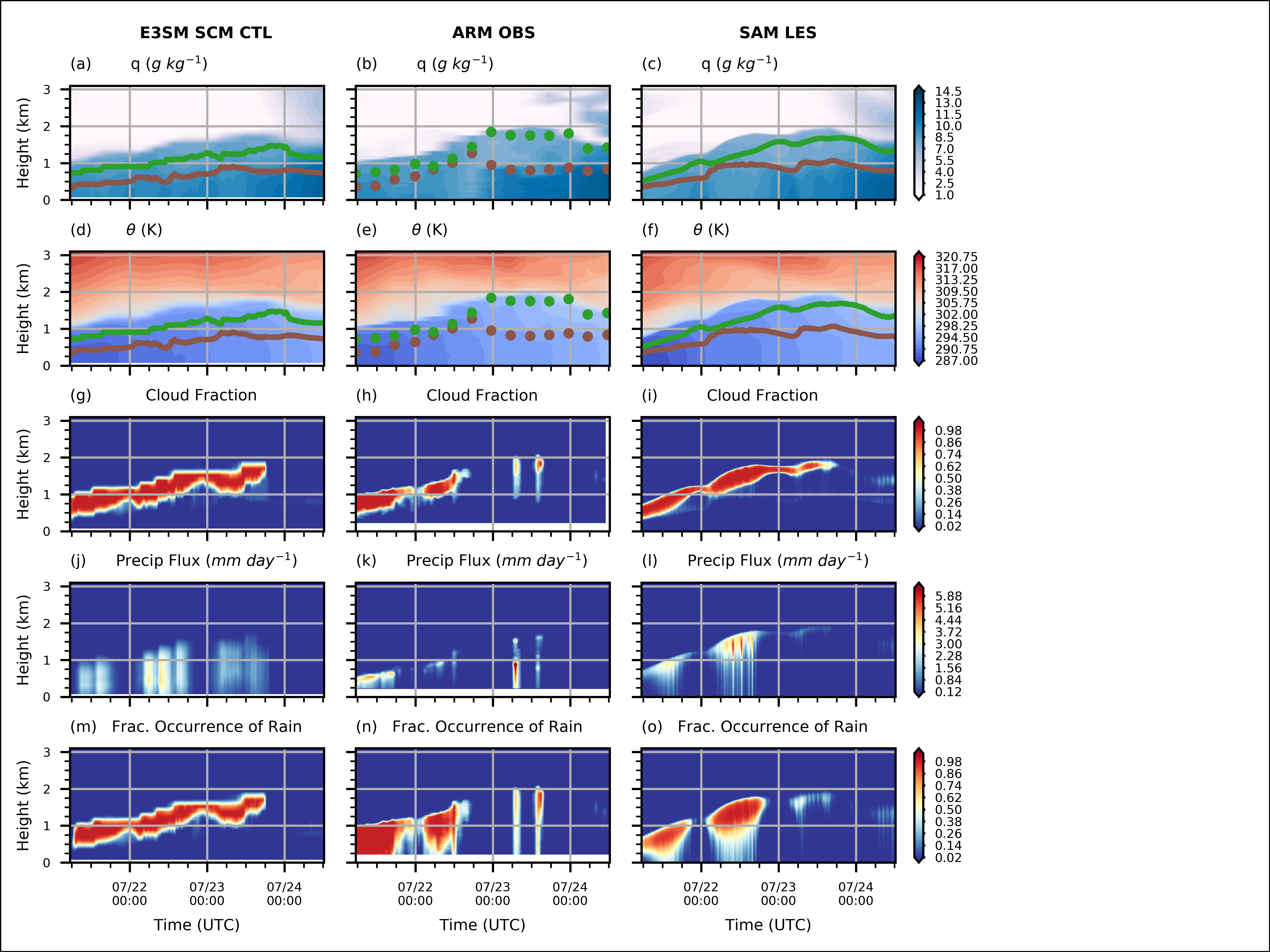A powerful framework to evaluate the physical parameterizations of large-scale models
Submitter:
Zheng, Xue — Lawrence Livermore National Laboratory
Klein, Stephen — Lawrence Livermore National Laboratory
Area of research:
Cloud Processes
Journal Reference:
Science
With the single-column model approach and the combination of advanced ARM remote-sensing observations and large-eddy simulation (LES), U.S. Department of Energy scientists identified the issues and causes of unrealistic vertical structure of precipitation in atmospheric model simulations, and suggested alternative physically consistent model settings that can improve the simulation of precipitation in marine stratocumulus clouds.
Impact
This study yields specific information relevant to the parameterization of large-scale model processes such as boundary-layer entrainment and precipitation and demonstrates the benefits of the process-level evaluation using advanced observations and LES. These results imply that a comprehensive examination of the parameterized microphysical processes with observational references is needed for current large-scale models.
Summary
Because of the significant radiative impact of stratocumulus (Sc) on Earth’s energy budget and persistent model Sc biases, general circulation models have spent tremendous development efforts on improving the representation of Sc processes via increasing the model vertical resolution and adopting sophisticated and unified physical parameterizations. The model biases in Sc regime, however, still exist in Earth System Models. To better identify the contribution of the model parameterizations and minimize the contribution of the non-local influences in version 1 of the Energy Exascale Earth System Model (E3SMv1), we adopt the single-column model (SCM) simulations constrained by observational large-scale environment during the Marine ARM GPCI Investigations of Clouds (MAGIC) field campaign. The E3SMv1 SCM well simulates the liquid water path and its diurnal cycle in the stratocumulus period as well as the two-layer vertical thermodynamic structure and lower cloud fraction in the transition period. On the other hand, E3SMv1 produces an unrealistically small sub-cloud precipitation fraction, an unrealistic double peak in the vertical profiles of precipitation mass, and drizzle that evaporates too close to the surface. Further model diagnostics confirmed that these unrealistic characteristics stem from an overly long microphysics time step and an unrealistic parameterization of precipitation fraction. This study demonstrates that the combination of ARM data, LES, and SCM approach can be a powerful framework for model evaluation and development.


